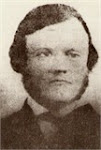The proposed sign would be installed in Ahuska Park and face the Beltline. (The Monona Rag recently posted on it.) The proposed lease would pay the city $22,500 per year for 15 years or $337,500 in total (that's a bit misleading; if you use a 3% discount rate, the present value is $216,628). The sign company, Adams would pay all other costs. That's pretty much the plus side.
Among other things, two issues have caught my attention on the negative side. One is the amount of energy the signs use. Alder Munson and I (perhaps others) are waiting for Adams to get back to staff with some figures.
Alder Munson found some data oin the Internet from a manufacturer of these types of signs. According to a manufacturer of electronic billboards, Action Graphix Digital, a 48’x14’ sign (as proposed here) typically uses about 17.6 kW. In a month, that would be 12,672 kW-hrs (assuming 24 hour/day operation, which may not be accurate).
According to Scott, the US Energy Information Agency, the average Wisconsin home uses 710 kW-hr per month. So, that sign would use as much energy in a month as almost 18 homes assuming the sign was in operation 24 hours per day.
The other issue is whether the signs present a safety hazard. Our WisDOT did a study on I-94 in Milwaukee that found substantial increases in crashes. The study is, however, a bit dated (1981-1987).
The NYT did a series on distracted drivers in March 2010. The story quotes an industry exec: "It’s a very flexible, very responsible medium and very impactful.” The research is somewhat muddled because the sign industry has a lot of money at stake and they have financed some of the research.
How much money? Here's what the NYT story says:
The signs are typically used in busy traffic areas, where advertisers are willing to pay a premium for them. A digital billboard costs $250,000 to $300,000, roughly half what it did five years ago, but much more than the $5,000 to $50,000 for a traditional billboard.
Space on the digital signs fetches a premium in part because up to six advertisers can share a single location. Traditional billboards fetch a wide range of monthly rents (from $1,000 to $5,000 depending on location and audience) and the digital versions cost the same or a bit more, but the industry benefits by selling that space at that price to more than one advertiser.Data showing the dangers of the signs can be found on the website of a public interest that opposes billboards generally. http://www.scenic.org/billboards/safety
Here is a link to 2009 FHWA study.
I haven't had time to read even a small portion of these reports. Feel free to dip in and offer up the choicer bits (oh, boy, the choicer bits from a federal highway study....gak.)
Or just offer up you take on this one.
















No comments:
Post a Comment